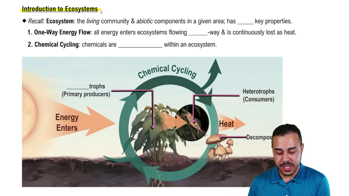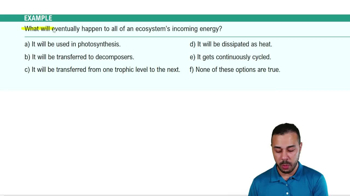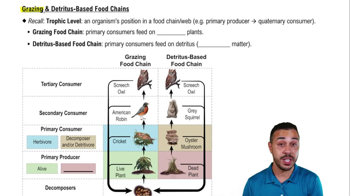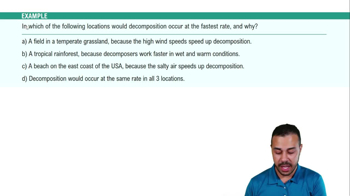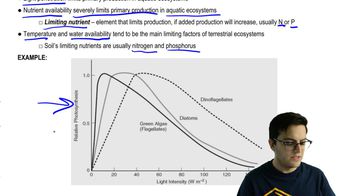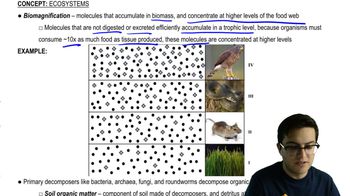52. Ecosystems
Introduction to Ecosystems
52. Ecosystems
Introduction to Ecosystems
Additional 57 creators.
Learn with other creators
Showing 60 of 60 videos
Practice this topic
- Multiple ChoiceWhich of the following is an ecosystem?1427views
- Multiple ChoiceThe biggest difference between the flow of energy and the flow of chemical nutrients in an ecosystem is that __________.1459views
- Multiple ChoiceIn an ecosystem, what will eventually happen to all incoming energy?1726views
- Multiple ChoiceThe main decomposers in an ecosystem are __________.1438views
- Textbook Question
Which of the following organisms is incorrectly paired with its trophic level?
a. Cyanobacterium—primary producer
b. Grasshopper—primary consumer
c. Zooplankton—primary producer
d. Fungus—detritivore
976views - Textbook Question
What is the main global reservoir of nitrogen?
1002views - Textbook Question
Add labels to the figure that follows, which illustrates the interacting factors in a declining population that contribute to the extinction vortex.
1056views - Textbook Question
Which of these ecosystems has the lowest net primary production per square meter?
a. A salt marsh
b. An open ocean
c. A coral reef
d. A tropical rain forest
1100views
